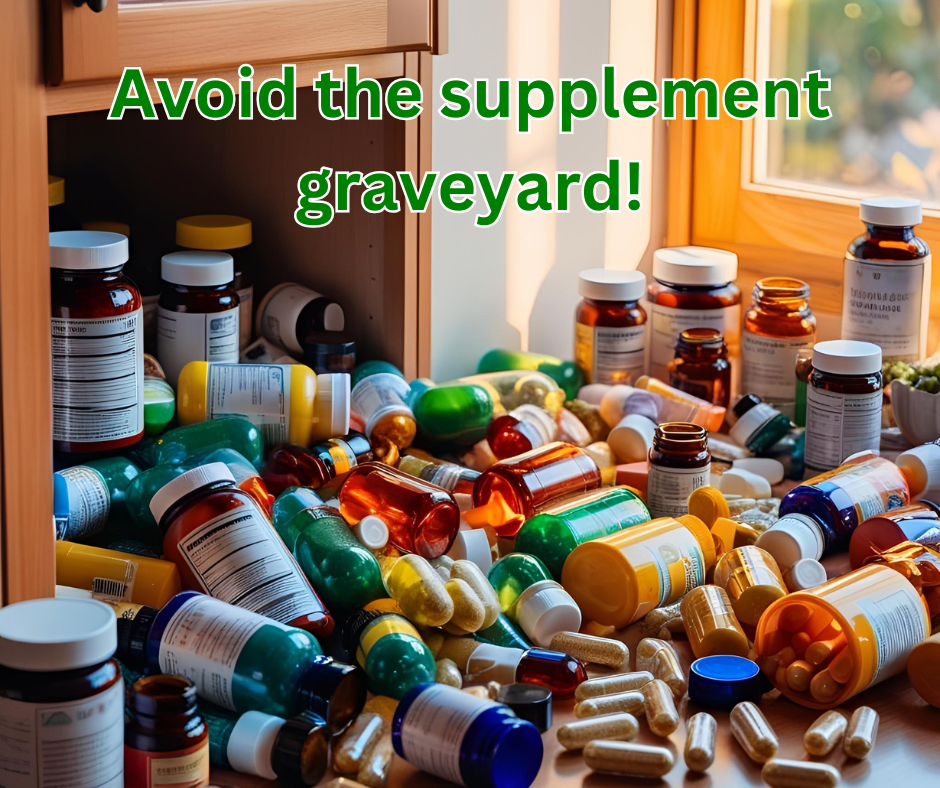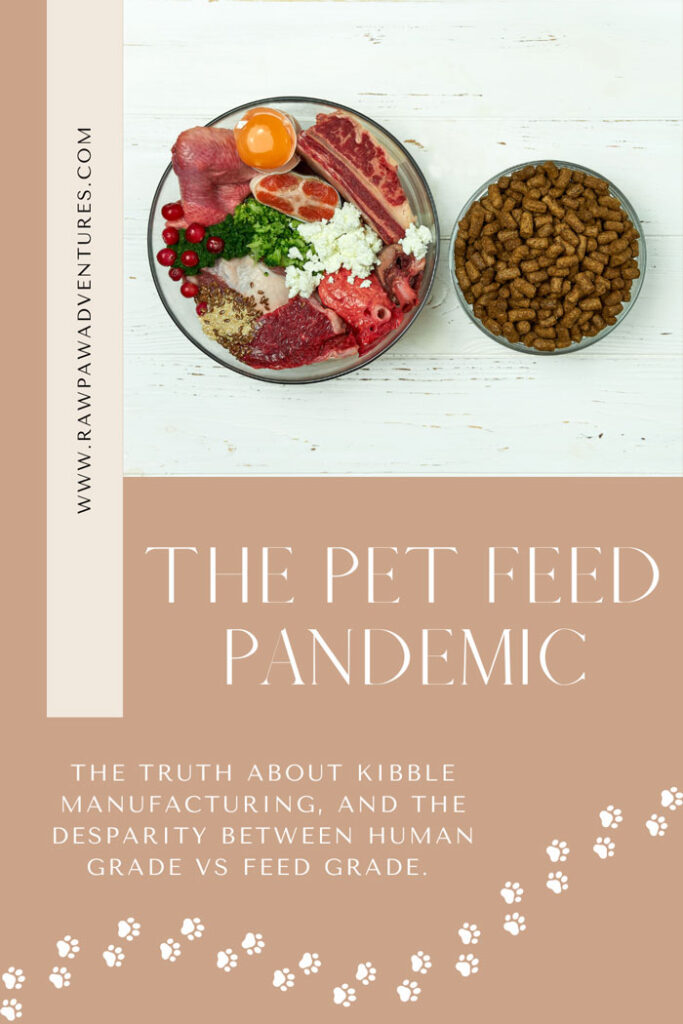
If you’ve ever wandered the aisles of a pet store or scrolled through the supplement options on Amazin, squinting at labels that sound more like chemistry experiments than actual food, you’re not alone. Choosing a supplement for your beloved fur baby (or scaly sidekick—I see you, reptile parents!) can feel like decoding a foreign language. The truth? Most pet supplements out there aren’t worth the price tag, and many may even do more harm than good.
Let’s talk about how to make smarter, safer, and more holistic choices when it comes to what you’re putting in your pet’s body.
How to Determine Quality vs Quackery
Only 15% of supplements are worth taking… yep, you read that right. According to supplement expert and functional nutrition practitioner Kate Mahoney, fewer than 15% of all supplements on the market—human or pet—are actually worth taking. That even includes professional or vet-recommended brands. Why? Because most of them are full of synthetic isolates (basically fake single nutrients or chemicals extracted from a whole plant or mushroom), low-quality ingredients, and more fillers than you’d see walking down a Silicon Valley boardwalk. And yes, a lot of those sketchy supplements are sitting in your vet’s office right now, which is pretty terrifying if you think about it.
Sadly, our pet professionals aren’t taught how to identify or formulate a quality supplement- it’s not something taught in vet school, nor is it something I learned in nursing or NP school! Doctors don’t learn it in their medical programs, and overall human and animal professionals are simply encouraged to trust the pharmaceutical and supplement companies when they give us lectures (and free food) and leave it at that. If we want to know more, we have to continue our education after school, and that can be a lot to ask someone after they’ve spent a decade and hundreds of thousands of dollars on school already! So keep that in mind when a medical professional recommends something to you- it’s ok to wait, do your research, and really ensure you’re comfortable before you go ahead with a supplement no matter the case.
Synthetic Doesn’t Mean “Sciencey and Cool”—It Means “Barely Absorbed and Possibly Dangerous”
Many synthetic nutrients are what’s called “isolates.” These are stripped-down, lab-made versions of nutrients found in nature. The body often has to work ridiculously hard just to convert them into something usable—and it usually can’t. We’re talking 2–3% conversion rates, and only if your pet’s body has enough energy and nutrient reserves to make that happen, which frequently is not the case.
Worse? These synthetic bits actually steal from your pet’s nutrient stores just to be processed and eliminated—because the body can see them as intruders. So yes, that “joint support” chew might just be creating expensive poop. Or worse, nutrient deficiencies and other health issues.
Here’s a tip: when a label says things like “folic acid,” “thiamine,” or “pantothenic acid,” those are red flags for synthetic isolates. The natural forms will say things like “vitamin C (from acerola cherry),” showing it came from an actual food source. Better still, some supplements will list the whole food the nutrient came from. If you see ingredients like amla, camu camu, or sprouted seeds—great! That’s real food, not food-flavored powder.
The “Inactive Ingredients” Rule: Less Is Best
Here’s the golden rule that’ll change how you shop: look at the inactive ingredients. If there are more than three, put it back on the shelf immediately. Seriously.
Inactive ingredients are often where the junk hides—fillers, binders, artificial flavors, and other stuff that has no business in your pet’s body. Here’s a quick PSA: mineral oil in supplements? It’s a byproduct of petroleum. And yet, it shows up in pet products all the time. Hard pass, thanks.
Another one you might come across is “natural flavors” and this is usually code for “chemical stew” that we do NOT want to take. However, it could be something that is actually natural, and that’s more likely to be stated as “natural orange flavor” or “natural flavor from oranges.” If you see this, reach out to the company to clarify- if they can’t tell you what it is or they say it’s a chemical, put it back!
Species-Appropriate Matters (A Lot)
One of the most powerful things you can do is educate yourself on what’s actually appropriate for your pet’s species. Garlic and onions (the allium family)? Toxic to cats. Avocado? Also not cat-friendly. Too much copper? Can wreck your pet’s liver—and a lot of pet foods and supplements are overflowing with it.
If you’re not sure whether something is safe, do a little digging. Check if the ingredients are truly necessary or just trendy. Because your pup doesn’t need a supplement just because it’s popular on TikTok.
Transparency Is Key
You know the brands doing it right? They want you to know they’re doing it right. They’ll tell you:
- Where their ingredients are sourced
- What their third-party testing shows (think heavy metals, mold, microbes)
- What exactly is in their products—including inactive ingredients
If they say, “Sorry, that’s proprietary,” that’s a hard no. You deserve answers, not secrets. To get this information, look for a COA on your products. A COA is a Certificate of Analysis, and it should show:
- The actual levels of nutrients, not just a “PASS” stamp
- Tests for heavy metals, bacteria (like E. coli or salmonella), and mycotoxins (mold)
- A recent date (within the last two years)
If a company doesn’t show their COA or tries to make it hard to get, run. Or at least power-walk away (preferable with your dog, they need exercise!). The COA should match the bath or lot number for the product you purchased or at least be current within 6 months. It also has to be third party tested. If a company is doing their own testing in house, it could be adulterated. That should set the alarm bells ringing and red flags waving!
I would especially recommend getting a COA for hemp and mushroom products. The two companies that I have complete faith in are CBD Dog Health and Mycodog (I know they have dog in the names but they also make supplements for cats & horses, and they’re human grade, which is why I take them myself!). They create products with no fillers, no flavors, no isolates, no synthetics, no CRAP! They do third party analysis on every batch of products and put the QR code on the label of each bottle. All their ingredients are North American grown on natural substrate, organic and top quality. So if you’re looking for companies who have the top standards in the market to compare others to- these are the ones!
What About Human Supplements for Pets?
Sometimes, human supplements can be used for pets—but only if you know exactly what’s in them and whether the ingredients are species appropriate. For example, many glucosamine supplements are made from shellfish. If your dog has a seafood allergy, that’s a problem. One human supplement I enjoy using is Heart & Soil. They make freeze dried desiccated beef organs, and they have a lot of options. They can be used for hormone replacement, secreting organ supplementation, neurological support and more. I take them myself, and I’ve used them for my cats. You can see them in the photo I took at the top of this article.
Another example here is multivitamins. First, a vitamin in a bottle is generally synthetic. And animals have vastly different nutrient needs than people. A B vitamin complex for a person may not even meet the requirements they need, while that same vitamin for a pet could lead to toxicity. So be cautious is going down the human supplement route and really do your research.
How to Avoid the Supplement Graveyard:

Now you have an idea of steps to take and qualities to watch out for when it comes to choosing a supplement. These steps will help prevent the development of the feared supplement graveyard! Here’s a summary of what you’ve learned:
- Stick to brands that shout their quality from the rooftops—they’ll talk about sourcing, purity, and testing. They share their COA and love to share all aspects of their creation with you.
- Use your inner detective—look up unfamiliar ingredients. If you don’t feel good about it, trust your gut. If you can’t pronounce it, you probably want to put it back.
- Don’t be fooled by flashy marketing—if something says it’s the “only supplement your pet will ever need!” well perhaps, but don’t just take them at their word. Look at reviews, talk to people who have used them, and don’t just be snared by a cute label.
- Be species-specific—just because it’s good for dogs doesn’t mean it’s safe for cats, or reptiles, or birds, or YOU!
- Less is more—three or fewer inactive ingredients is a great sign. Don’t settle for fillers just because you want to active ingredient.
- Get educated—If you want to become even more educated when it comes to all things supplement, get on the waitlist for the SQS Certification Course | Supplement Academy with Kate Mahoney!
As your pet’s caretaker, advocate, and the person your animal trusts most, it’s up to you to choose what’s best for them when it comes to everything from food to supplements to toys to grooming supplies! Choosing a supplement shouldn’t feel like a gamble—and it doesn’t have to. With a little knowledge and a lot of label-flipping, you can find the supplements that support your pet’s health without compromising on quality.


